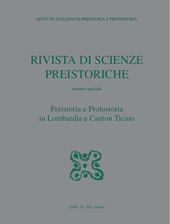Between Genoa and Günzburg - a communication corridor or a void?
P. 609-620
The Rhône/Saône corridor appears in the narratives about the Early Iron Age (EIA) as an all but exclusive vector for the development of protourbanism and the introduction of Mediterranean material and immaterial culture north of the Alps. The role of NW Italy, in particular of the Iron Age Golasecca group, in stimulating transalpine culture change has been largely neglected. NW Italy and the transalpine regions show instead a longue durée of interregional interaction, at least since the Bronze Age. In the Iron Age intensive connections particularly involving women, have in fact been noticed between Lombardy/ Piedmont and the western Alps, activated by the formation of the proto-urban centers in NW Italy as well as the emporium in Genoa during the 8th to 6th cent. BCE.
We propose that the area between Lake Constance and the Danube, generally neglected by Hallstatt scholars, played a crucial transalpine connective role. Another feature of transalpine proto-urbanism, the introduction of wheel-thrown pottery, may also be a result of Golasecca-western Hallstatt culture interaction. [Publisher's text]
-
Artikel aus derselben Ausgabe (einzeln erhältlich)
-
Informationen
DOI: 10.32097/1198
ISSN: 2282-457X


